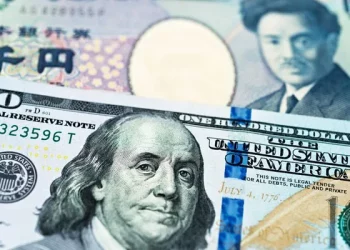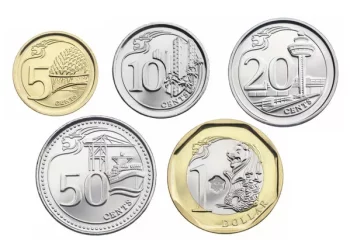In today’s interconnected world, currency exchange plays a critical role in international trade and investment. As a senior investor familiar with the trends and dynamics of the foreign exchange (Forex) market, understanding the nuances of currency conversion is vital. This article aims to explore the conversion of 10 British pounds (GBP) into Indian rupees (INR), examining the factors influencing exchange rates, the impact of geopolitical events, and the broader implications for investors and businesses.
Understanding Currency Exchange
Currency exchange involves converting one currency into another based on the prevailing exchange rate. The Forex market is the largest financial market globally, with a daily trading volume exceeding $6 trillion. This market operates 24/5, allowing for real-time trading across different time zones.
The Basics of Exchange Rates
Exchange rates fluctuate due to various factors, including economic indicators, interest rates, inflation, and political stability. The value of a currency is relative and can change frequently based on supply and demand dynamics.
Types of Exchange Rates
Floating Exchange Rate: In this system, the currency value is determined by the market forces of supply and demand. Most major currencies, including the GBP and INR, follow a floating exchange rate system.
Fixed Exchange Rate: A government or central bank pegs the currency to another major currency or a basket of currencies. This system is less common but can stabilize a country’s economy.
Managed Float: This is a hybrid system where the currency’s value is primarily determined by the market, but the central bank intervenes occasionally to stabilize or influence the exchange rate.
See Also:Current GBP Exchange Rate: 300,000 Pounds in Australian Dollars
Current Exchange Rate of GBP to INR
To determine how much 10 pounds is in Indian rupees, we first need to establish the current exchange rate. As of September 2024, the exchange rate fluctuates due to economic conditions, and it’s important to check reliable financial news sources or Forex trading platforms for the latest rates.
For example, the current exchange rate is 1 GBP = 112.16 INR, then 10 GBP would be:
10 GBP×112.16 INR/GBP=1121.6 INR
However, exchange rates can vary significantly, and the above calculation is illustrative.
Factors Influencing Exchange Rates
Several factors influence the GBP to INR exchange rate, including:
Economic Indicators
Economic data plays a significant role in determining currency values. Key indicators include:
Gross Domestic Product (GDP): A growing GDP indicates a robust economy, attracting foreign investment and increasing demand for the currency.
Inflation Rates: Higher inflation in a country typically leads to depreciation of its currency, as purchasing power diminishes.
Unemployment Rates: Low unemployment signals a healthy economy, bolstering currency strength.
Interest Rates
Central banks influence currency values through interest rate adjustments. When a central bank raises interest rates, it often leads to a stronger currency due to the influx of foreign capital seeking higher returns. Conversely, lower interest rates can lead to currency depreciation.
Political Stability
Political events, such as elections, policy changes, or geopolitical tensions, can significantly impact currency values. Stable political environments tend to attract foreign investment, boosting demand for the local currency.
Market Speculation
Traders’ perceptions and expectations regarding future economic performance can lead to currency fluctuations. Speculation can drive prices away from fundamental values, creating opportunities for investors.
Balance of Trade
The balance of trade refers to the difference between a country’s exports and imports. A trade surplus (more exports than imports) typically strengthens a currency, while a trade deficit can weaken it.
The Impact of Geopolitical Events
Geopolitical events can have an immediate effect on currency values. For instance, tensions between countries, trade wars, and global crises can lead to fluctuations in exchange rates. Investors must remain vigilant and adaptable to changing political landscapes.
Case Study: Brexit
The United Kingdom’s decision to leave the European Union, commonly known as Brexit, created significant uncertainty regarding the GBP’s value. Initially, the pound depreciated against several currencies, including the INR. Investors and businesses had to navigate the challenges posed by Brexit, including trade agreements and regulatory changes.
How to Convert GBP to INR
Now that we understand the factors influencing exchange rates, let’s delve into the practical aspects of converting GBP to INR.
Step 1: Check the Current Exchange Rate
Utilize reliable financial news platforms, Forex trading websites, or currency converter applications to find the most up-to-date exchange rate.
Step 2: Perform the Calculation
Once you have the current exchange rate, you can easily convert GBP to INR. Using the formula:
Amount in INR=Amount in GBP×Exchange Rate
Example Calculation
Assuming the exchange rate is 1 GBP = 100 INR, for 10 GBP:
10 GBP×100 INR/GBP=1000 INR
Step 3: Consider Additional Fees
When converting currency, consider any fees associated with the transaction. Banks and Forex exchanges often charge a commission or markup on the exchange rate, which can impact the final amount received in INR.
Practical Applications of Currency Conversion
Understanding currency conversion is crucial for various stakeholders, including:
Investors
Investors engaged in international markets need to monitor currency exchange rates to assess potential risks and returns. Currency fluctuations can affect the value of investments held in foreign currencies.
Businesses
Companies involved in import and export activities must account for currency conversion when pricing goods and services. Fluctuating exchange rates can impact profit margins, necessitating careful planning and risk management.
Travelers
Individuals traveling abroad must consider exchange rates to budget effectively. Familiarity with current rates can help travelers make informed decisions about currency conversion and avoid excessive fees.
Currency Conversion Tools and Resources
In today’s digital age, several tools and resources are available to assist with currency conversion:
Online Currency Converters
Websites and applications like XE, OANDA, and Google Finance offer real-time currency conversion and historical exchange rate data.
Forex Trading Platforms
Platforms like MetaTrader, Interactive Brokers, and eToro provide comprehensive tools for currency trading and conversion.
Financial News Sources
Staying informed through financial news outlets, such as Bloomberg, Reuters, and CNBC, can help investors track trends and anticipate currency fluctuations.
Conclusion
Understanding the conversion of currencies, such as 10 British pounds to Indian rupees, is crucial for investors, businesses, and travelers alike. The Forex market is influenced by a myriad of factors, including economic indicators, interest rates, political stability, and market speculation. By staying informed about these dynamics and utilizing reliable currency conversion tools, stakeholders can navigate the complexities of currency exchange effectively.
Ultimately, whether you’re an investor seeking to maximize returns, a business aiming to manage costs, or a traveler planning your next adventure, a solid grasp of currency conversion will enhance your financial decision-making in our increasingly globalized world.
Related Topics:



























